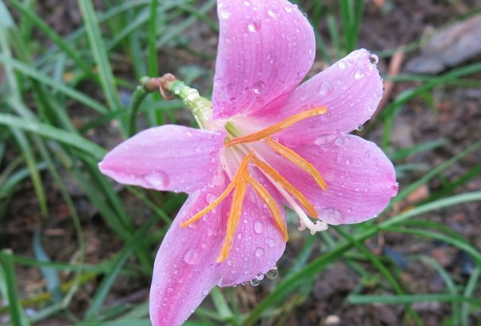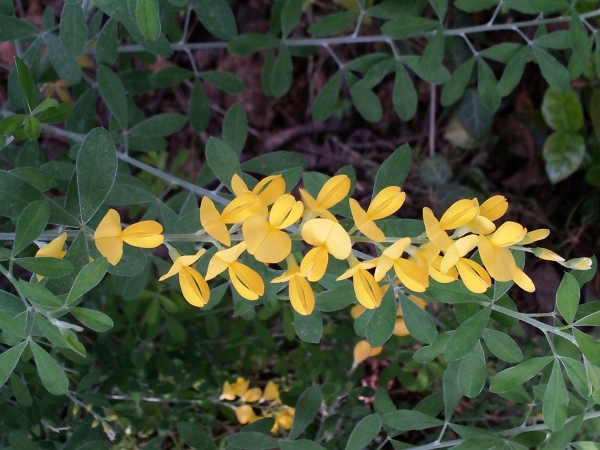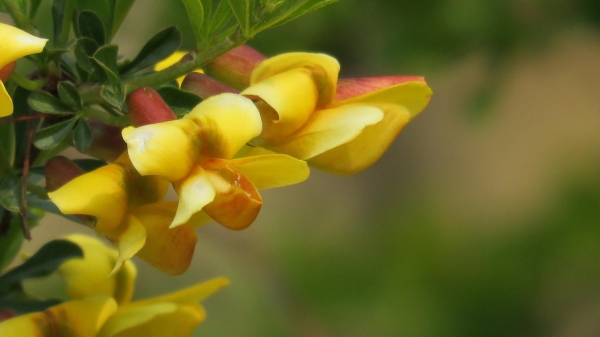Propagation method of leek lotus
Bulblet reproduction
Leek lotus can divide the ball in spring or autumn, first dig out the bulb root, separate it from the mother plant, re-cultivate the bulb root in the culture soil, pour water at one time, keep it in a cool place, and bask in the sun more after a week to ensure sufficient water and nutrients.

Ramet propagation
After two or three years of growth, leek lotus can be propagated separately. First of all, the underground bulbs should be dug out, and three or five bulbs should be taken out of the basin, together with the soil, which can be cultivated in the new culture soil, and the soil can be about 3 cm higher than the bulb.
Propagation methods of leek lotus
Propagation of leek lotus by ball-dividing method
First of all, we dig out the bulb and separate it from the matrix.
The dug-out bulb is then cultivated in the soil to make it an independent new plant.
Pour the water at once, put it in a cool place, and you can see the sun after a week.
Note that the dividing time of leek lotus is fine in both spring and autumn, but it should be guaranteed to have sufficient light, fertilizer and water.
Bulb ramet propagation of leek lotus
After growing for two or three years, the leek lotus at home can be propagated by ramets.
First of all, let's dig out the underground bulbs in the basin, three to five bulbs into a nest.
Then the bulb with soil is knocked out from the flowerpot, the old soil that was brought before is removed, and the new culture soil should be placed in the flowerpot.
If you want to continue to plant separately in the future, you can choose to plant deeply, with the soil about three centimeters higher than the bulb.
Matters needing attention of bulbs and bulbs of leek lotus
After autumn, the leaves of leek lotus usually begin to turn yellow from the top. We can dig out the bulbs and bulbs from the soil, air them moderately, and store them in a humid environment with a temperature of 2 ℃.
If preserved properly, storage for about 90 days will not affect reproduction.
Family culture method of leek lotus
The overall growth habits of leek lotus show a warm, moist and sunny environment. Not afraid of extreme heat, strong cold resistance. It is very convenient in family planting.
Temperature requirements of Chinese chive lotus culture
Leek lotus likes a warm environment. Generally speaking, it blossoms in September, the 6th month of each year.
The most suitable temperature for the growth of leek lotus is 16-28 ℃, which is not cold-resistant, and the overwintering temperature should not be lower than 5 ℃.
If the indoor can maintain more than 15 ℃ in winter, leek lotus can also continue to grow healthily. It can even blossom.
Light requirements of Chinese chive lotus culture
Leek lotus likes the sunny environment, if the growth environment is shady, then the quality of the seed balls will be poor.
Although the semi-shade can also blossom, but the number of flowers is small, the florescence is short.
Too much darkness may lead to non-flowering results.
Water requirement of Chinese chive lotus culture
Leek lotus likes the soil environment which is slightly dry, resistant to drought and afraid of waterlogging.
During the growing period, the soil should be dry and wet, and there must be no stagnant water. Reduce the amount of water after September, from November to February of the following spring, to ensure that it is dry and slightly moist.
Requirements of soil for cultivation of leek lotus
The most suitable soil for leek lotus should be sandy soil with good drainage and rich in humus.
However, the character of leek lotus is tenacious, and the requirement of soil in family breeding is not high. It can be adapted from slightly acidic to weakly alkaline soil, from sandy soil to light clay.
A layer of hard plastic foam or broken bricks can be placed at the bottom of the basin for ventilation and drainage.
- Prev

Breeding method of Caragana
Pruning Caragana must be pruned regularly as it grows if it is to remain beautiful. In winter, after defoliation, can cut off all kinds of disease branches, dead branches, rotten branches. When waiting for the spring plants to grow again, prune the branches and branch more. Cut off the overgrown branches when the caragana is growing vigorously
- Next

Key Points of Conservation of Caragana
Caragana loves light, so keep it in a sunny place. The soil had better choose the sandy soil with better drainage and fertility. Have you learned how to shape a Caragana bonsai? Caragana shape is mainly in the Qiu branch, posture quaint for the best, can also be made into branches and leaves of the trend of drooping; or lift the roots exposed claws
Related
- Fuxing push coffee new agricultural production and marketing class: lack of small-scale processing plants
- Jujube rice field leisure farm deep ploughing Yilan for five years to create a space for organic food and play
- Nongyu Farm-A trial of organic papaya for brave women with advanced technology
- Four points for attention in the prevention and control of diseases and insect pests of edible fungi
- How to add nutrient solution to Edible Fungi
- Is there any good way to control edible fungus mites?
- Open Inoculation Technology of Edible Fungi
- Is there any clever way to use fertilizer for edible fungus in winter?
- What agents are used to kill the pathogens of edible fungi in the mushroom shed?
- Rapid drying of Edible Fungi

